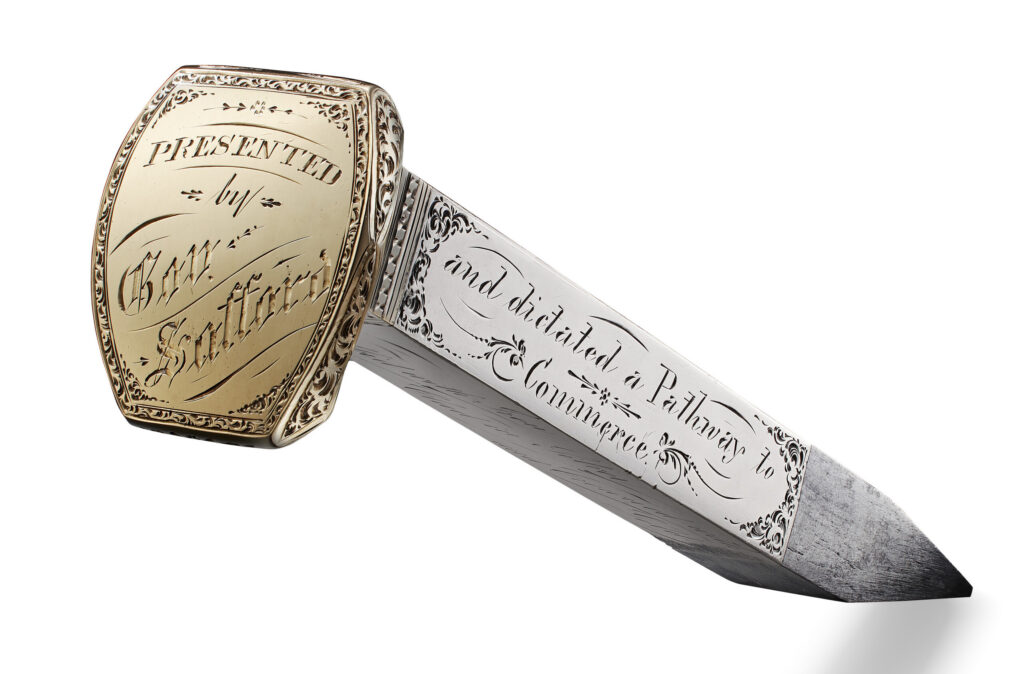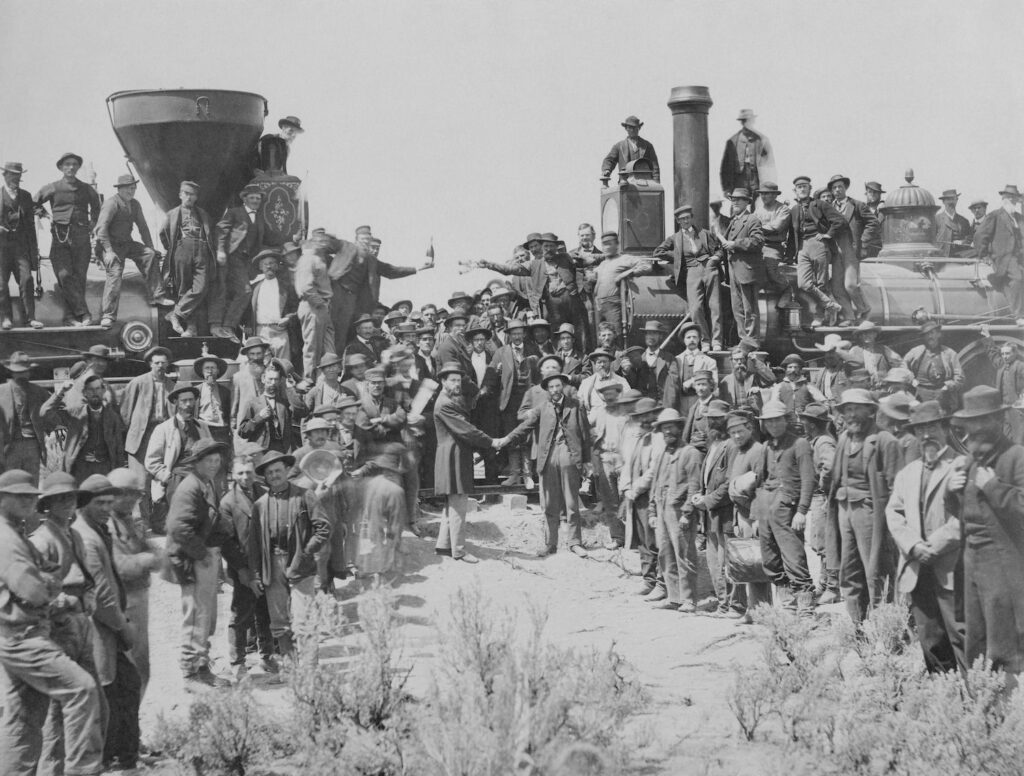
First of all, it seems buck wild that a spike from the Golden Spike ceremony marking the completion of the transcontinental railroad is even available for sale. Second, but really first, it is even wilder how hard the lot description for the spike rides for its urgent historical relevance right. now.
Maybe it helps that the spike, known as the Arizona Spike, is being sold in Christie’s “Exceptional Sale,” an off-season, cross-department assemblage of objets whose only obvious common thread is their uniqueness. But I’m hard-pressed to think of another auction text that makes a stronger case, not just for an object’s historical significance, but its contextualization in the current culture. It’s a text that belongs in a museum, like the spike itself.
Which, yeah, funny story. The spike is one of four [or seven, or maybe even eight, with at least one missing, this essay does have everything] made for the hastily organized 1869 ceremony, and is being sold by the Museum of the City of New York, where it was donated in 1943, by a New York descendant of Sidney Dillon, the Union Pacific executive and US Government defrauder who took the spike home from the hammering.
That defrauding’s in there, along with the delay to the ceremony when Dillon and other execs had their private rail car decoupled in Wyoming, and were held hostage by Union Pacific laborers who hadn’t been paid for five months. And the dispossession of Indian lands by the railroad grants. And the racist legislation banning immigration from China, where so many of the actual railroad workers came from. The same workers who got their due after several paragraphs detailing the preening rivalries and promotional dithering, including the Central Pacific’s Leland Stanford’s wiring his spike to the telegraph, so that his hammer blow would go out to the nation live–and then he missed:
The dignitaries soon left the scene while a Chinese crew replaced the ceremonial tie with a pine tie and common iron spikes — leading one journalist to declare, most appropriately, that in reality was not [the Union Pacific’s Dr. Thomas] Durant or Stanford, but rather it was the ‘Chinese who really laid the last tie and drove the last spike.'”

Anyway, the lot description and the feature article related to it are truly a journey. It addresses the spike’s provenance, trying to harmonize incomplete contemporary media references–a very Arizona Spike-ish spike was reportedly displayed in a San Francisco jewelry store weeks after Dillon presumably took the spike back east with him from Promontory, Utah–with family lore–from a family which included a namesake/great-grandson who became secretary of the Smithsonian. But it also puts the historic significance of the Golden Spike (or Last Spike) ceremony and the transcontinental railroad itself into both historic and contemporary context with amazing candor and rigor. What feels like it should be the rule for museums is, for an auction house, exceptional.
UPDATE: Sold for a hammer price of $1.8 million, $2.22 million with buyer’s premium. Excellent monetization, Museum of the City of New York!
The Execptional Sale, Lot 15: A Steel Railroad Spike Clad In Gold and Silver… [christies.com]
A Point of Acceleration: The Arizona Railroad Spike and the birth of modern America [christie’s magazine]
